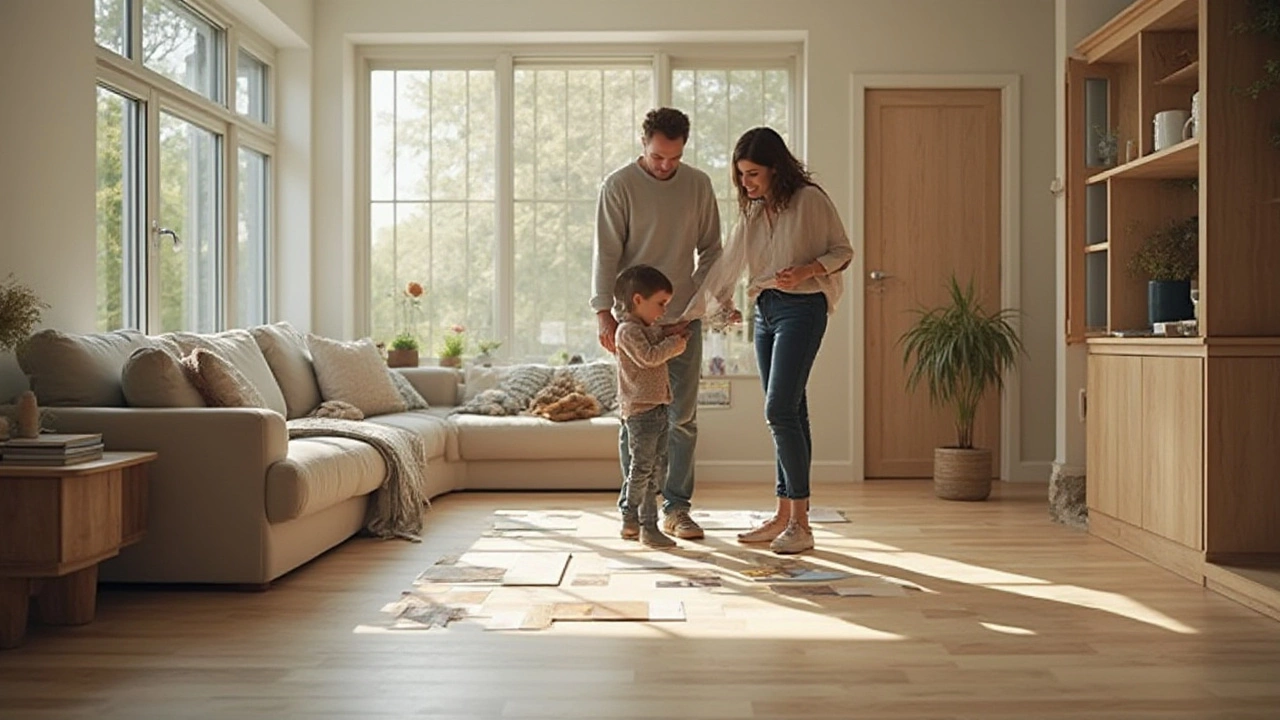New Home Flooring: Choose the Right Floor for Your Build
Walking into a fresh‑built house and feeling the floor under your feet is a small moment that tells you a lot about the whole home. The right flooring not only looks good, it protects the structure, helps with heating, and can even boost resale value. If you’re planning a new build or just finishing up a renovation, here’s a straight‑forward rundown of what to consider.
Popular Flooring Types for New Builds
Hardwood is a classic favorite. It adds warmth, ages well, and can be sanded a few times if you ever want a new finish. Prices vary – oak and ash are mid‑range, while exotic species cost more. Expect a life span of 30‑50 years with proper care.
Laminate mimics wood or stone without the high price tag. Modern laminates are scratch‑resistant and fairly easy to install as a floating floor. They’re a solid choice for living rooms and bedrooms where you want the look of hardwood but need a tighter budget.
Engineered wood sits between solid hardwood and laminate. A thin hardwood veneer sits on a stable plywood core, making it less prone to expansion in humid climates. It’s a smart pick for basements or first‑floor rooms that see temperature swings.
Vinyl plank (LVP) has come a long way. Today’s designs look just like real timber, yet the material is waterproof, soft underfoot, and easy to replace. It’s perfect for kitchens, bathrooms, and any area prone to spills.
Tile – porcelain or ceramic – offers durability, fire resistance, and a cool surface for hot climates. The downside is it can be hard on the knees and may need a radiant heating system underneath for comfort.
How to Install and Maintain Your New Floor
Installation method matters as much as material. A "floating" floor (laminate, LVP, engineered wood) rests on an underlay and doesn’t need nails or glue. It’s a DIY‑friendly choice if you’re comfortable with basic tools.
For nailed or glued‑down floors like solid hardwood or tile, you’ll usually need a professional. Proper subfloor preparation – level, clean, dry – prevents squeaks and cracked tiles later on. McNeil Plumbing & Construction Services can handle subfloor prep, especially when you’re coordinating with plumbing lines or heating pipes.
After the floor is in, maintenance keeps it looking fresh. Sweep or vacuum regularly to avoid grit scratching the surface. Use a damp mop for vinyl and tile, but never soak wood floors. Spot‑clean spills right away – especially on hardwood – to stop stains.
Consider a protective finish. A polyurethane coat on hardwood adds shine and durability, while a simple sealant works for engineered wood. For laminate and LVP, a quality underlay also helps with sound reduction and adds a bit of insulation.
Finally, think about future upgrades. If you plan to change rooms or add radiant heating later, choose a flooring system that can adapt. Floating floors are easy to lift and replace, while glued‑down options may require more work.
Choosing the right floor for a new home boils down to three questions: How much do I want to spend? How will the room be used? What look matches my style? Answer those, pick a material that fits, and make sure the installation is done right. Your new floor will thank you for years of comfortable, hassle‑free living.

